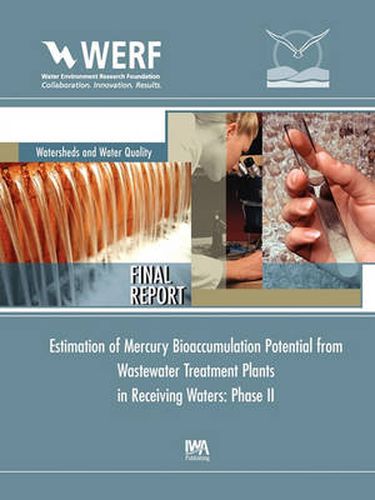Readings Newsletter
Become a Readings Member to make your shopping experience even easier.
Sign in or sign up for free!
You’re not far away from qualifying for FREE standard shipping within Australia
You’ve qualified for FREE standard shipping within Australia
The cart is loading…






This project was initiated in response to the establishment of mercury TMDLs around the country and issues raised by this process, specifically concerning the issue of mercury bioavailability. While many TMDLs recognize that point sources constitute a small fraction of the mercury load to a water body, a question has been raised concerning the relative bioavailability of mercury coming from various sources. For instance, is the mercury discharged from a wastewater treatment plant more or less bioavailable than mercury in precipitation, mercury in urban stormwater, or mercury in sediments? This project seeks to address this question by developing a reliable definition and approach to estimating bioavailability, by profiling various sources of mercury in a watershed with regard to the species of mercury present and by profiling those factors or conditions in either the effluent or the receiving water that enhance or mitigate the bioavailability of those forms.
The report consists of two volumes. Volume I is a background document for evaluating the biovailability of mercury in wastewater effluents and receiving waters and establishes relevant project objectives. Volume II is a guidance document for wastewater treatment professionals interested in assessing the bioavailability of mercury in their wastewater, comparing it to other sources, and assessing changes in bioavailability in their effluent when it is mixed in a receiving water body.
The project concludes that, based on available data and bioavailability as defined in this report, wastewater effluent is one of the lowest among the sources evaluated with respect to mercury bioavailability due to its typically low levels of methylmercury. Due to their typically low levels of suspended solids, wastewater treatment plants employing post-secondary treatment should not contribute appreciably to local sediment mercury burdens.
$9.00 standard shipping within Australia
FREE standard shipping within Australia for orders over $100.00
Express & International shipping calculated at checkout
This project was initiated in response to the establishment of mercury TMDLs around the country and issues raised by this process, specifically concerning the issue of mercury bioavailability. While many TMDLs recognize that point sources constitute a small fraction of the mercury load to a water body, a question has been raised concerning the relative bioavailability of mercury coming from various sources. For instance, is the mercury discharged from a wastewater treatment plant more or less bioavailable than mercury in precipitation, mercury in urban stormwater, or mercury in sediments? This project seeks to address this question by developing a reliable definition and approach to estimating bioavailability, by profiling various sources of mercury in a watershed with regard to the species of mercury present and by profiling those factors or conditions in either the effluent or the receiving water that enhance or mitigate the bioavailability of those forms.
The report consists of two volumes. Volume I is a background document for evaluating the biovailability of mercury in wastewater effluents and receiving waters and establishes relevant project objectives. Volume II is a guidance document for wastewater treatment professionals interested in assessing the bioavailability of mercury in their wastewater, comparing it to other sources, and assessing changes in bioavailability in their effluent when it is mixed in a receiving water body.
The project concludes that, based on available data and bioavailability as defined in this report, wastewater effluent is one of the lowest among the sources evaluated with respect to mercury bioavailability due to its typically low levels of methylmercury. Due to their typically low levels of suspended solids, wastewater treatment plants employing post-secondary treatment should not contribute appreciably to local sediment mercury burdens.